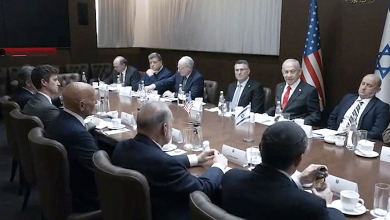A daring marketing campaign by German crane manufacturer Böcker has ignited a firestorm of discussion online, capitalizing on the alleged use of one of their products in a high-profile Louvre Museum theft. The company’s brazen approach, referencing the infamous heist, has sparked both admiration and controversy.
The Louvre robbery, still shrouded in mystery, continues to captivate the world. From the speed and precision of the operation to the immense value of the stolen items, the security lapses that allowed it to occur, and the meticulous details that resemble a scene from a meticulously crafted film, the incident is nothing short of legendary. However, it was the documented moment of the thieves’ escape, allegedly utilizing a Böcker Agilo furniture crane, that truly caught the public’s attention. The Agilo, designed to transport items weighing up to 400 kilograms with minimal noise and discretion, seemed the perfect tool for the job.
Instead of shying away from the association with criminal activity, Böcker embraced it head-on. In a social media post that quickly went viral, the company declared, “When you need things done fast,” alongside images referencing the Louvre incident. This audacious move has positioned them at the center of a global conversation.
Alexander Böcker, the company’s director, revealed the genesis of the marketing idea. “We heard about the theft at the Louvre on Sunday and quickly confirmed that the equipment used in the crime was one of our cranes. As soon as we learned that no one was hurt, we started receiving messages from employees,” he explained. He and his wife began brainstorming marketing concepts, highlighting the ease of setup and speed of operation of their equipment under legitimate circumstances. According to Böcker, his wife was the originator of the now-famous slogan, “When you need things done fast.”
The “Networks” program on October 26, 2025, showcased the diverse reactions of social media users to Böcker’s advertisement. One user, Ravi, expressed admiration for the company’s bold move, writing, “A marketing idea par excellence, worthy of respect and reward. This is the team that can capitalize on every idea and every opportunity!” Another user, Jude, pointed out that the company was not complicit in the crime but rather a victim of product theft: “The company has nothing to do with the robbery. The company owner said that the crane was stolen from the person who bought it.”
Rama, meanwhile, praised the quality of German manufacturing and its ability to perform even in extraordinary circumstances: “Indeed, German industry always amazes you, even in the most difficult and bizarre situations. The crane entered history through the back door of the Louvre!” However, Sally expressed reservations, stating, “I think the crane’s involvement in the theft could bring suspicion around the manufacturer, and I don’t think the company is happy about this involvement.”
Despite the tongue-in-cheek nature of the campaign, the Böcker director emphasized that theft remains a reprehensible crime. He expressed relief that no one was injured during the operation, attempting to demonstrate the company’s social responsibility.
For more information about Sports, check our dedicated section.
The ad itself shows a crane lifting a wrapped painting out of a window with the Eiffel Tower in the background, clearly referencing the Louvre Museum. The tagline is prominently displayed, cementing the link between the product and the infamous heist.
Beyond the marketing buzz, the investigation into the Louvre theft continues. The Paris Public Prosecutor announced the arrest of a suspect at Charles de Gaulle Airport while attempting to leave the country. The prosecutor did not disclose the number of remaining detainees or provide additional details about the ongoing investigation. Authorities are reportedly examining security footage and interviewing museum staff to piece together a clearer picture of the events leading up to the theft.
The incident has raised serious questions about security protocols at the Louvre, one of the world’s most visited museums. Experts are calling for a thorough review of existing measures and the implementation of more robust safeguards to prevent future incidents. Some have suggested increased surveillance, stricter access controls, and more advanced alarm systems. Others argue that the focus should be on addressing the underlying economic and social factors that may have motivated the perpetrators.
The brazenness of the theft, coupled with the audacity of Böcker’s marketing campaign, has undoubtedly captured the public imagination. While some applaud the company’s creativity and willingness to take risks, others criticize them for seemingly trivializing a serious crime. Regardless of one’s perspective, the incident serves as a reminder of the power of marketing and the enduring fascination with art heists. It remains to be seen whether Böcker’s gamble will ultimately pay off, but one thing is certain: the company has successfully positioned itself as a brand that is not afraid to challenge conventions and seize opportunities, even in the most unexpected circumstances.
The case also highlights the complex relationship between marketing, ethics, and public perception. While businesses often strive to associate their products with positive attributes, Böcker has deliberately linked its brand to a criminal act, albeit in a humorous and self-aware way. This strategy carries significant risks, as it could alienate potential customers or damage the company’s reputation. However, it also has the potential to generate significant buzz and increase brand awareness, as evidenced by the widespread media coverage and social media discussions surrounding the campaign.
The long-term impact of Böcker’s marketing stunt remains to be seen. However, it has undoubtedly sparked a debate about the boundaries of marketing and the ethics of capitalizing on real-world events. Whether the company’s bold move will ultimately prove to be a stroke of genius or a misstep remains to be seen, but it has certainly cemented its place in the annals of unconventional marketing campaigns. The incident also serves as a cautionary tale for businesses seeking to capitalize on current events, highlighting the importance of considering the potential ethical and reputational implications before launching a controversial campaign. In the age of social media, where news and opinions spread rapidly, companies must be more mindful than ever of the potential for their actions to be scrutinized and judged by a global audience.




